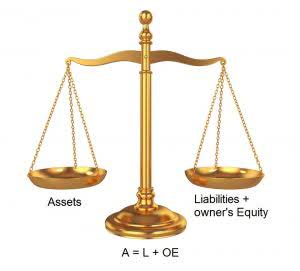
Those who are struggling with recording contra accounts may benefit from utilizing some of the best accounting software currently available. The allowance method of accounting allows a company to estimate what amount is reasonable to book into the contra account. The percentage of sales method assumes that the company cannot collect payment for a fixed percentage of goods or services that it has sold. Contra accounts provide more detail to accounting figures and improve transparency in financial reporting. There is no answer to contra accounts…best i can guess is that QB does NOT have the ability. Let me give you the detailed steps on how to set up a contra account for net sales accumulated depreciation.
AccountingTools

Utilizing contra expenses offers several advantages in financial accounting, including enhanced expense recognition, clearer financial statements, and improved alignment of revenues and expenses. Another example is in the software industry, where contra expense accounts may be applied to offset development costs that are later reimbursed by clients as part of service contracts. This allows the company to accurately report the net expense incurred in the development process. This balance is used to offset the value of the asset being depreciated, so as of September 1, your $8,000 asset now has a book value of $7,866.67. Inventory obsolescence is an expense account, while the allowance for obsolete inventory is a contra asset account, which aims to reduce the inventory valuation on your balance sheet. By using contra expense accounts, financial statement users can gain a more accurate and detailed understanding of the company’s expense structure, allowing for better financial analysis and decision-making.
List of Contra Accounts
An example of contra expense would be a sales discount that is given to customers. This discount is recorded as a contra expense in the sales account, reducing the overall revenue generated from sales. This account serves two purposes — tracking total depreciation expenses while providing you with the accurate book value of the asset being depreciated. Asset accounts always maintain a debit balance, so anytime that you increase the value of an asset, such as when you deposit customer payments contra expense account or invoice a customer, that asset account is debited or increased. Likewise, when you pay a bill, your cash account is reduced (credited) because you’re lowering the balance. On the income statement, the net cost of goods sold will be reported as $98,000 ($100,000 – $2,000), reflecting the impact of the purchase discount.
Why Use a Contra Account?
- Despite their advantages, contra expenses have limitations such as potential complexity in financial calculations and the need for accurate tracking of contra revenue and expenses.
- In the first month of the arrangement, the company pays the insurer $10,000, which Inscrutable records in a long-term disability insurance expense account.
- This process calculates the decline in value of the natural resource and offsets it against the initial appraisal of the land where the resource is being extracted from.
- Contra expense accounts play a crucial role in financial accounting, offering a nuanced way to track and report reductions in expenses.
- Examples of equity contra accounts are Owner Draws and Repurchased Treasury Stock Shares.
- One of the key strategies for companies to manage contra expenses efficiently involves conducting regular evaluations to identify areas where cost savings can be made and adjusting spending accordingly.
This method allows companies to segregate certain expenses that need to be distinguished for analytical purposes, such as discounts, rebates, or returns. By utilizing contra expense accounts, businesses can provide a clearer picture of their operational costs and profit margins. In finance, the term contra expense refers to a specific account on the income statement that offsets regular expense accounts, affecting the recognition of expenses within financial reporting. To account for depletion, an Accumulated Depletion account is created so that it can serve as a contra account for the parent Fixed Asset account.

How to Record a Contra Account
- For instance, when a company buys back their own shares, they register them in a ‘Treasury Stock’ contra equity account, which reduces total shareholders’ equity.
- By properly accounting for contra expenses, businesses can present a more holistic view of their financial performance, leading to informed decision-making and strategic planning.
- However, these accounts are still useful when dealing with large quantities of reimbursements, where it is cleaner and less confusing to store the information in a separate account.
- Contra equity is a general ledger account with a debit balance that reduces the normal credit balance of a standard equity account to present the net value of equity in a company’s financial statements.
- Another description of a contra expense account is an account that reduces or offsets the amounts reported in another general ledger expense account(s).
- Unlike regular expenses, which are recorded as a positive amount in an account, contra expenses are recorded as a negative amount and serve to offset the balance in a corresponding account.
A contra asset account is an asset account where the account balance is a credit balance. It is described as “contra” because having a credit balance in an asset account is contrary to the normal or expected debit balance. (A debit balance in a contra asset account will violate the cost principle.) Learn more about contra asset accounts. If you’re https://x.com/bookstimeinc still using manual accounting systems, you’ll need to do a bit more work by recording your accumulated depreciation expense in your general ledger while also reporting it on your balance sheet as a contra asset account. In this example, the contra expense account (Purchase Discounts) is used to provide a more accurate and detailed representation of the company’s expenses, allowing for better financial analysis and decision-making.
